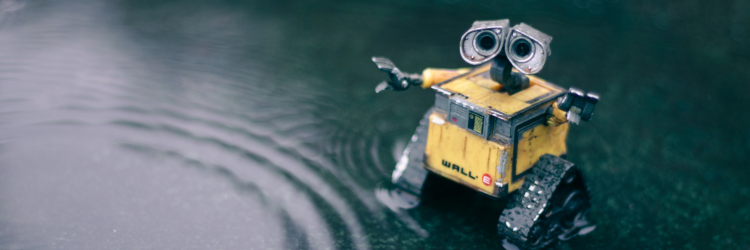Recent reports on the improving dexterity of robotic hands have raised the prospect that humanoid robots will show up in big numbers in workplaces and homes within the next few years, with obvious implications for workers' comp and homeowners insurance. Many investors are all in on the idea: Securities analysts say some 75% of Tesla's $1.5 trillion of market value stems from optimism about its prospects for "embedded AI," in its cars and Optimus humanoid robots. Hypemeister-in-chief Elon Musk said this summer that the robots could generate $30 trillion (that's trillion, with a "t") in annual revenue for Tesla.
Color me skeptical. I think specialized robots, a la the roughly 1 million in use in Amazon warehouses, will continue to proliferate rapidly but believe it will be decades before humanoid robots can function like people in the home and workplace.
And it just so happens that a thorough takedown began making the rounds recently, explaining in a far-more-learned way than I could just why human-level dexterity remains so far off for our machines.
I'll share.
The bullish case for humanoid robots goes more or less like this article from Bain, which begins:
"Dexterous, bipedal robots with general intelligence are advancing faster than many expected, and they’re quickly becoming economically viable. Within five years, robots will likely be able to perform a wide range of physical tasks at a cost that rivals or beats human labor. Adoption is poised to accelerate across industries, from manufacturing to food service, healthcare, and even construction."
The piece adds that "robotic mobility and dexterity are reaching human levels" and that "cost parity is within reach" for robots and human labor.
Rodney Brooks, a professor emeritus of robotics at MIT, counters that, while "the general plan is that humanoid robots will be 'plug compatible' with humans and be able to step in and do the manual things that humans do at lower prices and just as well..., believing that this will happen any time within decades is pure fantasy thinking."
He zeroes in on the dexterity issue, where he says humanoid proponents are making a false analogy to other AI-based systems — image labeling, speech to text and large language models (LLMs) — that have made exponential progress. He says those three benefited from decades of research that provided detailed, digital descriptions of what constituted an image, speech and the text that LLMs have been trained on. That baseline needs to be there, Brooks says, before you can turn machine learning loose and get the kinds of near-magical improvements we've seen with images, speech/text and LLMs. Yet researchers and developers are, he says, simply showing their robots videos of people handling objects and counting on the AI to figure out how to copy the movements.
Brooks adds that humanoid robots have nowhere near the sensitivity of a human hand, with its "about 17,000 low-threshold mechanoreceptors in the glabrous skin (where hair doesn’t grow) of the hand, with about 1,000 of them right at the tip of each finger."
He says walking is the other main issue with humanoid robots. He acknowledges that he's seen robots about half the height of humans maneuver smoothly among people in somewhat chaotic environments but notes that robots don't (in fact, can't, he says) walk as smoothly as humans and says the issue becomes far more complicated if the robot is the full height of a human, as it needs to be to take over most human tasks. The tendency is to think that doubling the height merely doubles the complexity, but you're also doubling the width and the depth, so you're actually having to deal with roughly eight times the volume and mass.
I'll add the cost issue. Musk's claim that Tesla can generate $30 trillion a year in revenue from humanoid robots is based on a price of $30,000 apiece. I don't like doing laundry or putting away dishes any more than the next person, but I'm not going to spend $30,000 (plus some annual fee for maintenance) just to have a robot do the chores, then go stand creepily in a corner until I assign it another task.
I'm not at all suggesting that robots won't play a huge role in our future — just that they will be in the workplace, not the home, and that the robots will be specialized, not humanoid. I think the future for manufacturers, retailers, fast-food restaurants and many others looks a lot like what Amazon is pioneering with the sort of array of task-specific robots described in this New York Times story.
As this related article in the Times shows, the results will still be profound for insurers, because hundreds of thousands of workers won't be hired for the sorts of jobs that run relatively high risks of injury — and that's just at Amazon. The article says Amazon expects to sell twice as many products by 2033 but will need some 600,000 fewer workers in its warehouses because of robotic automation (while needing some thousands of robot maintenance workers who, Amazon notes, will earn higher pay).
Just don't expect the robots to look like you or to run your home like Rosey the Robot did for the Jetsons.
Cheers,
Paul


